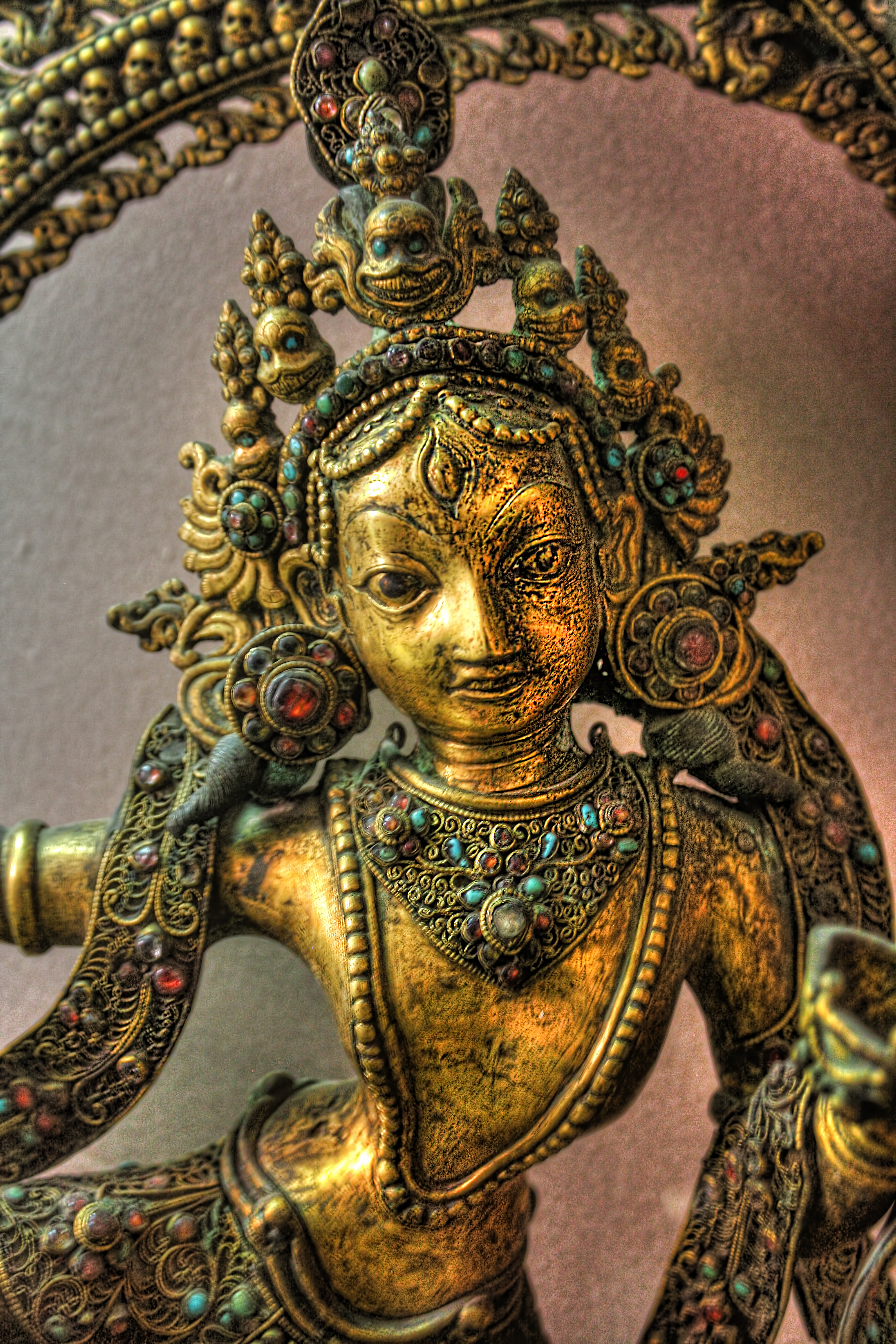Many of us, it seems, might type "Tara Ferguson age" into a search bar, perhaps looking for details about a person. It's a natural thing to do, really, when you hear a name and want to know more. Yet, in some respects, the name "Tara" itself carries a much, much older and truly profound meaning, one that goes far beyond a simple age or a single individual. Our discussion here, drawing from ancient wisdom, explores Tara not as a person with a specific birthdate, but as a timeless, powerful spiritual presence. This is about a figure revered across centuries, a beacon of hope and liberation for countless individuals.
This journey into the meaning of Tara, as it happens, opens up a world of deep spiritual significance. You see, when we talk about Tara in this context, we're not talking about someone who has a birthday or a specific number of years lived. Instead, we are looking at a divine feminine figure, a guiding light that has inspired devotion and meditation for a very long time. It’s a bit like asking the age of a mountain or the sky; the concept just doesn't quite fit.
So, while the search for "Tara Ferguson age" might bring you here, what you'll discover is a story of wisdom, compassion, and spiritual strength. We'll delve into the essence of Tara, the "mother of liberation," and understand why her presence is so vital in many spiritual paths. It's a pretty interesting shift in perspective, wouldn't you say?
- %D9%BE%D8%B1%D9%86%D8%AF%D9%87 %D8%A8%D8%B1 %D8%B1%D9%88%DB%8C %D8%B4%D8%A7%D8%AE%D9%87 %D8%AF%D8%B1%D8%AE%D8%AA
- Ventura County Credit Union
- The Violet Hour Chicago
- Hansen Dam Aquatic Center
- Masons Famous Lobster Rolls
Table of Contents
- Tara: A Spiritual Presence, Not a Personal Biography
- Who Is Tara? The Mother of Liberation
- The Many Faces of Tara
- Tara as a Guide and Protector
- Meditating on Tara: Cultivating Inner Qualities
- Tara and Her Origins: A Journey Through Time
- FAQ About Tara
Tara: A Spiritual Presence, Not a Personal Biography
When people look up "Tara Ferguson age," they are, quite naturally, seeking details about a human being. They want to know when someone was born, perhaps what they've done, or where they fit into the timeline of life. However, the Tara we are exploring today is truly different. This Tara, often known as Ārya Tārā or Jetsün Dölma, meaning "Venerable Mother of Liberation," exists outside of typical human measurements like age. She is, in a way, a timeless essence, a spiritual force.
It's important to grasp that this Tara is a female bodhisattva, very much associated with Tibetan Buddhism. She isn't a celebrity with a birth certificate or a public figure with a known career path. Instead, she represents profound spiritual virtues and a deep, enduring compassion. So, asking for her "age" is a bit like asking how old wisdom is, or how many years compassion has been around. Those concepts, you see, simply don't have a beginning or an end in the way a person does.
This understanding helps us move beyond the initial search query and into a much richer, more meaningful exploration. We're talking about a figure that embodies success in a spiritual sense, a guide for liberation from suffering. She is, quite simply, a powerful, benevolent presence that has touched countless lives through spiritual practice, not through a personal narrative with dates and ages.
- Michael Kidd Gilchrist Hornets
- Rappers In Atlanta Ga
- How Tall Is Kanye West
- Marion Jones Usa Athlete
- Charlamagne Tha God Net Worth
Key Attributes of Tara (The Deity)
| Nature | Female Bodhisattva, Mother of Liberation, Female Buddha |
| Primary Association | Tibetan Buddhism |
| Key Virtues | Wisdom, Compassion, Success, Protection |
| Role | Savior deity, Liberator from suffering, Guide to enlightenment |
| Symbolism | Divine Feminine, Embodiment of True Nature |
| Origin | Originally a Hindu goddess, absorbed into Buddhist pantheon |
Who Is Tara? The Mother of Liberation
Tara, or Ārya Tārā, is widely known as Jetsün Dölma in Tibetan traditions. This name itself, "Venerable Mother of Liberation," gives you a pretty good idea of her central role. She is, quite simply, a female bodhisattva, a being who has attained enlightenment but chooses to remain in the world to help others. Her connection with Tibetan Buddhism is very strong, and she is revered there, and also in places like Nepal and Mongolia. She is, in a way, the very heart of compassionate action.
She is often called the "mother of liberation," and this title really sums up her essence. Tara represents the virtues of success in a spiritual sense, helping beings break free from suffering and find true freedom. She is seen as the "wisdom mother of the buddhas," which means she embodies the very wisdom that gives rise to enlightenment. It's a rather profound concept, isn't it? She is the compassionate activity of all the buddhas, a truly active and responsive force in the world.
Beyond these titles, Tara is most famously known as a female buddha and the embodiment of the divine feminine. Sometimes, people even refer to her as the Tara goddess. In the Buddhist tradition, Tara is, quite literally, a savior deity, a savioress who works to liberate souls from suffering. She is recognized as a bodhisattva, an "essence of enlightenment," within Mahayana Buddhism. Her name, "star" in Sanskrit, also suggests her role as a guiding light, helping followers navigate life's challenges.
The Many Faces of Tara
One of the most fascinating things about Tara is that she isn't just one single image. She is represented in many different forms within Buddhist iconography, each one highlighting a particular aspect of her compassionate activity. Green Tara and White Tara are some of the most commonly discussed forms, and you might have even heard about them or seen their images. But, as a matter of fact, there are many, many different aspects of Tara, each with its own specific color, posture, and symbolism.
For instance, Green Tara is often seen as the swift liberator, ready to spring into action to help those in need. She is associated with overcoming obstacles and fear, and she offers immediate protection. White Tara, on the other hand, is typically linked to long life, healing, and serenity. Her seven eyes, including three on her face and one on each hand and foot, symbolize her ability to see all suffering. It's a pretty powerful visual, actually.
These different forms allow practitioners to connect with Tara in a way that resonates with their specific needs or challenges. Whether it's for protection, healing, wisdom, or swift assistance, there's a form of Tara that embodies that particular quality. This rich diversity shows just how versatile and encompassing her compassionate presence truly is. People sometimes learn to recite mantras to Tara, or try various Tara practices, to connect with these specific energies.
Tara as a Guide and Protector
Tara is, without a doubt, considered the most powerful female deity in the Buddhist pantheon. Her name, as mentioned, means "star" in Sanskrit, and she is truly believed to possess the ability to guide followers, much like a star guides a traveler in the night. She is a compassionate protector, always there to offer swift liberation from fear and suffering. It's a truly comforting thought, isn't it?
Her role as a rescuer is deeply ingrained in her identity. The very word "Tara" means "rescuer," reflecting her active role in helping beings overcome difficulties. She is revered as a compassionate protector, a swift liberator, and a beacon of hope for many practitioners. When faced with challenges, many turn to Tara, trusting in her ability to provide guidance and protection. She is seen as someone who can help you through the tough spots.
In truth, she is the embodiment of our true nature: wisdom and compassion. Meditating on Tara helps us awaken to our innate buddha nature and cultivate her virtuous qualities. She is a deity worshipped in Tibetan Buddhism that helps followers obtain enlightenment. This isn't just about external help; it's about awakening the inner qualities that lead to liberation. She is, in a way, a mirror reflecting our own potential for wisdom and kindness.
Meditating on Tara: Cultivating Inner Qualities
Meditating on Tara is a powerful practice for many who follow Buddhist traditions. It’s not just about sitting still; it’s about actively engaging with her qualities and inviting them into your own being. When you focus on Tara, you are, in a way, connecting with the very essence of wisdom and compassion that she represents. This process helps you to awaken to your own innate buddha nature, that deep well of potential within you. It's a very personal journey, really.
Through this meditation, people aim to cultivate her virtuous qualities within themselves. This means becoming more compassionate, more wise, more courageous, and more capable of acting swiftly to help others. It's a practical application of her teachings, helping you to embody the very qualities that make her such a beloved figure. So, it's not just about worship; it's about transformation.
Tara is characterized by her profound compassion, and she is especially popular in Tibet, Nepal, and Mongolia. In Tibet, where Tara is deeply revered, her presence is felt in daily life and spiritual practice. Meditating on her helps practitioners to dissolve obstacles, reduce fear, and cultivate a sense of inner peace and strength. It's a way to truly connect with the "mother of liberation" and find your own path to freedom.
Tara and Her Origins: A Journey Through Time
It's quite interesting to consider Tara's historical journey. Originally, she was a Hindu goddess, which shows how spiritual traditions can, in a way, flow and merge over time. She was absorbed into the Buddhist pantheon during the sixth century C.E., a period of significant cultural and religious exchange. This transition highlights the adaptability and inclusivity of various spiritual paths, allowing powerful figures to find new expressions and meanings.
This absorption meant that Tara’s image and significance evolved, finding new representation in Buddhist iconography. Her presence became deeply woven into the fabric of Buddhist practice, particularly in the Mahayana tradition. This historical development shows that while spiritual figures are timeless in their essence, their forms and interpretations can, you know, shift and grow with the changing understanding of humanity.
In Buddhism, Tara is recognized as a bodhisattva, an "essence of enlightenment." This means she is a being who has postponed her own complete nirvana to help all sentient beings achieve liberation from suffering. Her journey from a Hindu goddess to a central Buddhist deity is a testament to her enduring appeal and the universal qualities she embodies. It's a rather fascinating story of spiritual evolution, isn't it?
FAQ About Tara
People often have questions about Tara, especially when they first encounter her. Here are some common inquiries that help clarify her role and significance.
Is Tara a goddess or a Buddha?
Tara is often referred to as both. She is sometimes called the Tara goddess, reflecting her divine feminine qualities and her historical origins. However, in the Buddhist tradition, she is also recognized as a female Buddha and a bodhisattva. This means she has achieved enlightenment and embodies the qualities of a Buddha, but she remains in the world to help others. It's a pretty encompassing role, actually.
What is the meaning of Tara?
The name "Tara" means "star" in Sanskrit, symbolizing her role as a guiding light. It also means "rescuer," which reflects her primary function as a compassionate protector and swift liberator from suffering. So, her name really captures her essence: a guiding, saving presence.
Why is Tara important in Buddhism?
Tara is incredibly important in Buddhism because she represents the compassionate activity of all the Buddhas. She is seen as a savior deity who liberates souls from suffering and helps followers obtain enlightenment. Her swift action and unwavering compassion make her a beloved and highly revered figure, offering hope and protection to practitioners. She is, in a way, a very accessible and active form of spiritual assistance.
For more insights into ancient spiritual figures, you could learn more about spiritual practices on our site. And to explore other powerful female deities, you might want to link to this page divine feminine figures.
For a broader look at the concept of deities in different cultures, you could check out this general resource: Deity on Wikipedia.
- Buenos Dias Feliz Domingo
- India Square Jersey City
- Michael Kidd Gilchrist Hornets
- 620 Jones Sf Ca
- North Coast Music Festival



Detail Author:
- Name : Manley Cummings
- Username : mwolf
- Email : nbartell@dibbert.org
- Birthdate : 1988-06-11
- Address : 82267 Gerhold Wall East Godfrey, MI 10845-4996
- Phone : (707) 528-2645
- Company : Kessler-Weissnat
- Job : Cartoonist
- Bio : Sit maxime quidem hic assumenda. Mollitia aspernatur veniam adipisci. Dignissimos et saepe autem sint.
Socials
tiktok:
- url : https://tiktok.com/@hilma_official
- username : hilma_official
- bio : Eos et dicta possimus unde est praesentium nemo.
- followers : 5878
- following : 1893
twitter:
- url : https://twitter.com/hilma.murphy
- username : hilma.murphy
- bio : At rerum repellat non expedita vel autem et suscipit. Optio maxime voluptas sit doloribus dolores. Quis accusantium porro ut vero ratione voluptates.
- followers : 1027
- following : 1363
linkedin:
- url : https://linkedin.com/in/hilma4301
- username : hilma4301
- bio : Repellendus dolorum non consectetur doloribus.
- followers : 3223
- following : 2408

